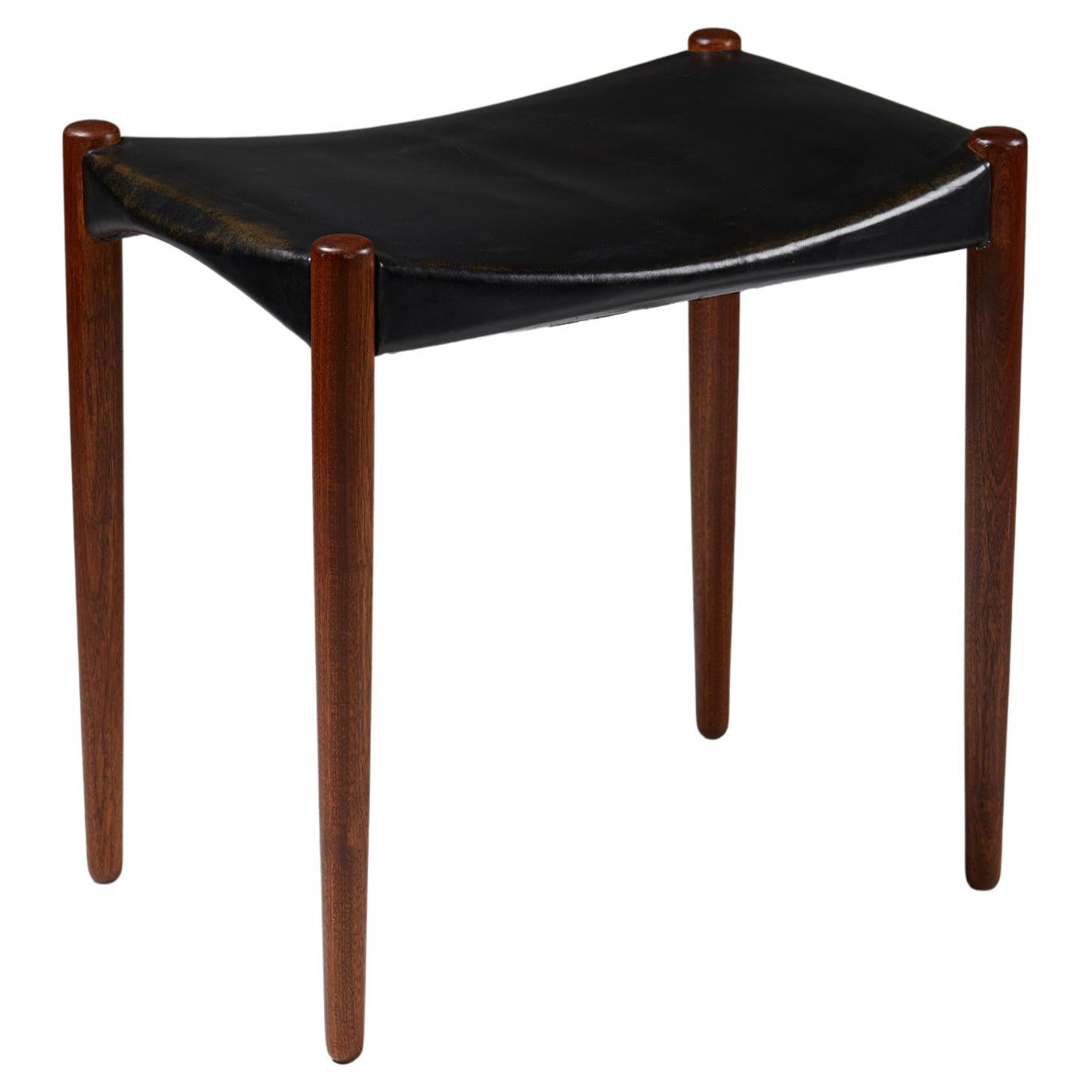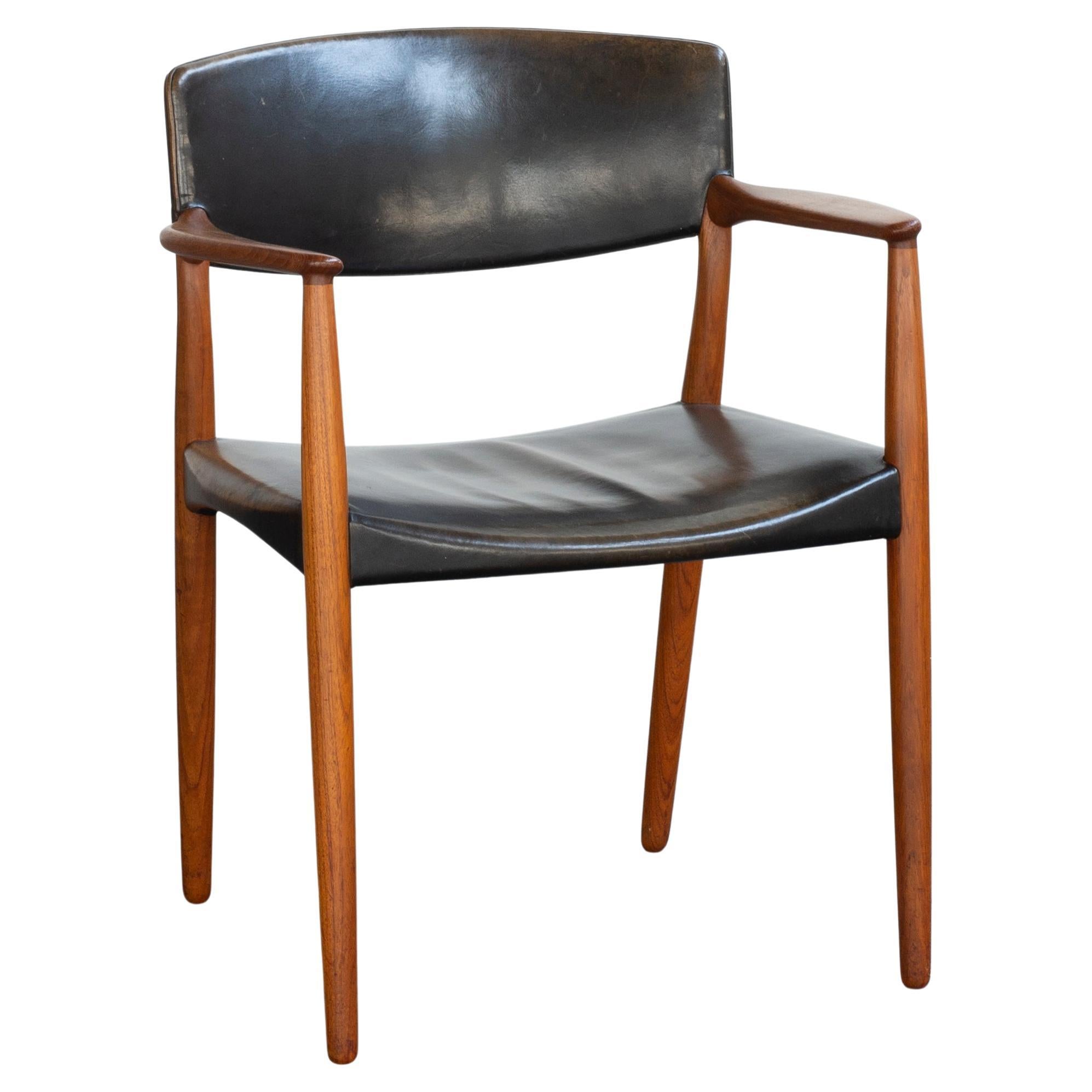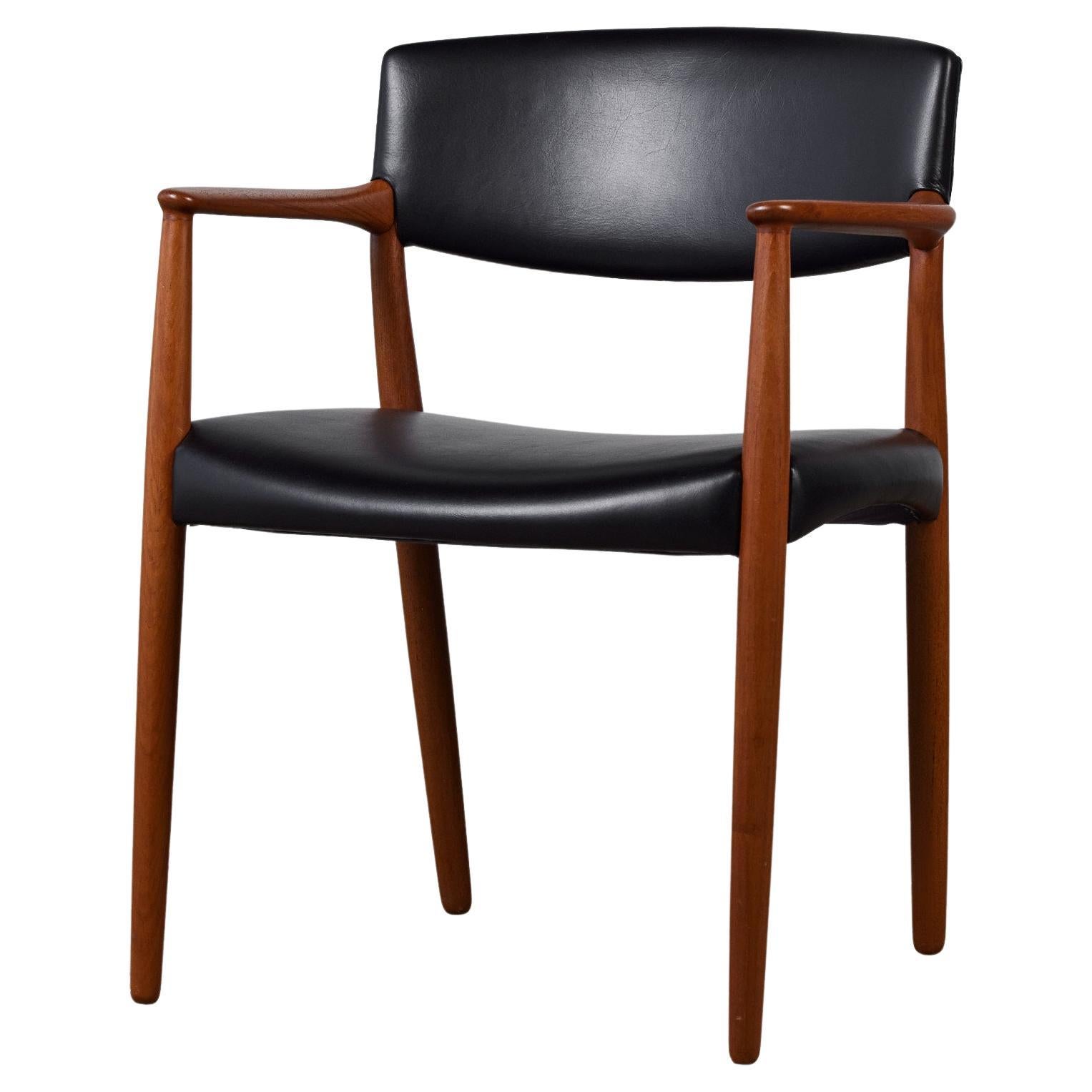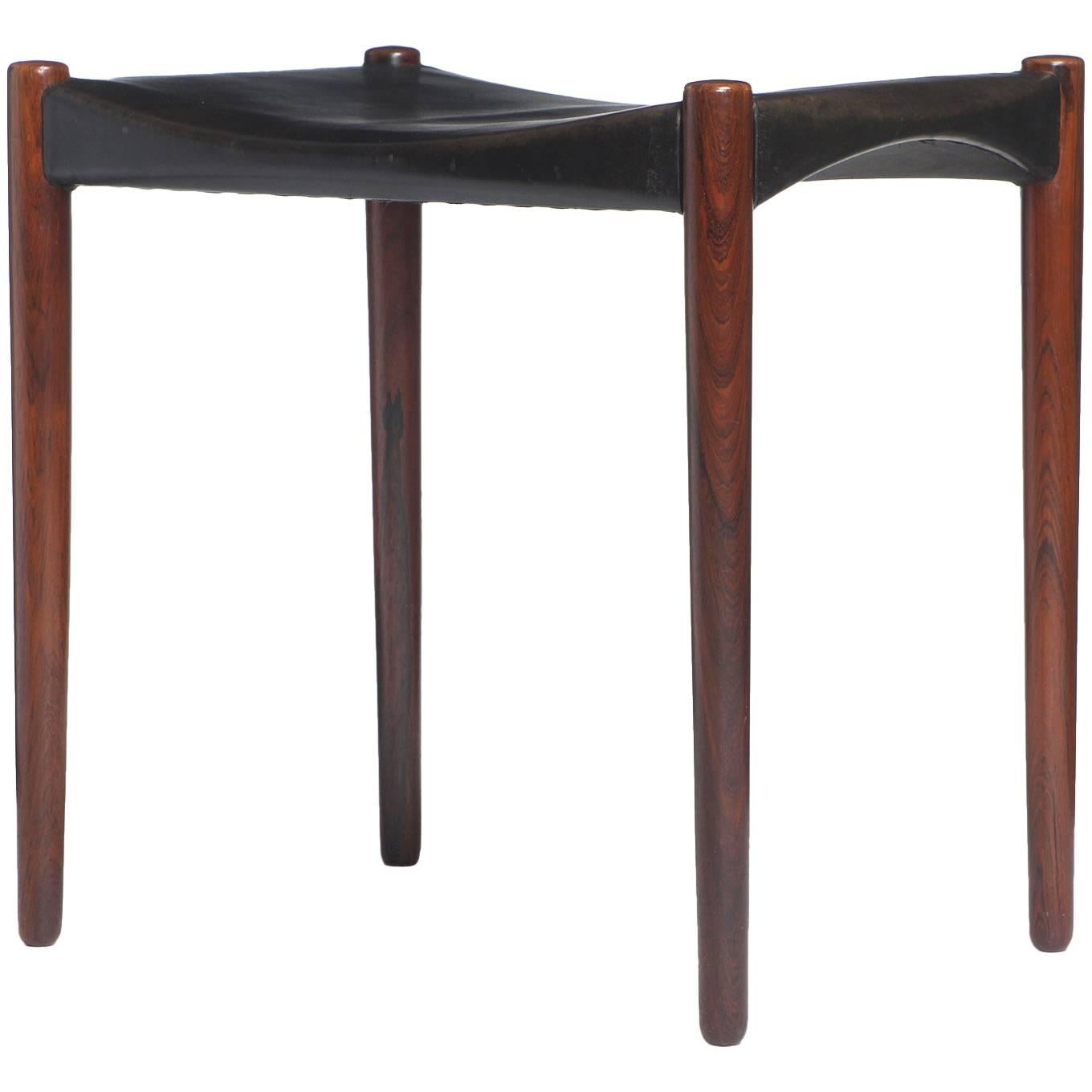Items Similar to Stool designed by Ejner Larsen and Aksel Bender Madsen for Willy Beck
Want more images or videos?
Request additional images or videos from the seller
1 of 9
Stool designed by Ejner Larsen and Aksel Bender Madsen for Willy Beck
About the Item
Stool designed by Ejner Larsen and Aksel Bender Madsen for Willy Beck,
Denmark, 1950s.
Brazilian rosewood and leather.
Marked.
Dimensions:
H: 50 cm / 19 3/4''
W: 56 cm / 22''
D: 40 cm / 15 3/4''
- Creator:Ejner Larsen and Aksel Bender Madsen (Designer)
- Dimensions:Height: 19.69 in (50 cm)Width: 22.05 in (56 cm)Depth: 15.75 in (40 cm)Seat Height: 19.69 in (50 cm)
- Style:Mid-Century Modern (Of the Period)
- Materials and Techniques:
- Place of Origin:
- Period:
- Date of Manufacture:1950s
- Condition:
- Seller Location:Stockholm, SE
- Reference Number:1stDibs: LU1006632571482
About the Seller
5.0
Recognized Seller
These prestigious sellers are industry leaders and represent the highest echelon for item quality and design.
Gold Seller
These expertly vetted sellers are highly rated and consistently exceed customer expectations.
Established in 1998
1stDibs seller since 2013
184 sales on 1stDibs
Typical response time: 1 hour
- ShippingRetrieving quote...Ships From: Stockholm, Sweden
- Return PolicyA return for this item may be initiated within 2 days of delivery.
More From This SellerView All
- Stool Designed by Ejner Larsen and Aksel Bender Madsen for Willy BeckBy Ejner Larsen and Aksel Bender MadsenLocated in Stockholm, SEDenmark, 1950’s. Teak and leather. Stamped. Measures: H: 53 cm / 20 ¾’’ W: 54 cm / 21 ¼’’ D: 37 cm / 14 ½’’.Category
Mid-20th Century Danish Mid-Century Modern Stools
MaterialsLeather, Teak
- "Metropolitan" Chair by Aksel Bender Madsen and Ejner Larsen for Willy BeckBy Aksel Bender MadsenLocated in Stockholm, SEArmchair Metropolitan designed by Aksel Bender Madsen and Ejner Larsen for Willy Beck, Denmark. 1950s. Lacquered wood and original cane. Dimensions: H: 78 cm/ 2' 7'' D: 50 cm/ 1' 8...Category
Vintage 1950s Danish Scandinavian Modern Armchairs
MaterialsCane, Lacquer
- Stool Designed by Ingvar Kamprad for Habitat, Sweden, 2004By Ingvar KampradLocated in Stockholm, SEStool designed by Ingvar Kamprad for Habitat, Sweden. 2004. Lacquered pine. Stamped. Measurements: H: 36 cm / 1' 2" Diameter: 32 cm / 1' 1/2".Category
Mid-20th Century Swedish Mid-Century Modern Stools
MaterialsPine
- Stool Model 927 Designed by Josef Frank for Svenskt Tenn, Sweden, 1950sBy Josef FrankLocated in Stockholm, SEStool model 927 designed by Josef Frank for Svenskt Tenn, Sweden, 1950s. Mahogany and rattan. Measures: H: 43 cm W: 43 cm D: 28 cm Josef Frank was a true European, he was also a pioneer of what would become classic 20th century Swedish design and the “Scandinavian Design Style”. Austrian- born Frank started his design career as an architect after having trained at the Technische Hochschule in Vienna between 1903 and 1910. After his training he went on to teach at Kunstgewerbeschule (The Viennese School of Arts and crafts) where he developed and espoused the new school of modernist thinking towards Architecture and Design that was coming to fruition in Vienna at the time. He also went on to lead the Vienna Werkbund throughout the 1920s. This was a truly progressive group of Architects and Designers who set about improving the daily lives of Austrian people through modernist design and architecture in partnership with Arts and Crafts ideals and construction. Frank’s leadership of the Werkbund had already cemented his place at the forefront of European design. Frank’s time in Vienna was typified by his design for the “Die Wohnung” exhibition of the Deutscher Werkbund in Stuttgart, 1927 where he exhibited along side his contemporaries at the forefront of design, such as the likes of Le Corbusier and Walter Gropius. Here he showed a specially designed pair of flat-roofed reinforced concrete houses in what is now seen as a typical modernist style. What separated Frank’s house from the other 32 houses of the exhibition was the interior and furniture inside the building. It was described as “Neo-Classical” and filled with an eclectic mix of period pieces, modern design and pieces designed by Frank himself that seemed to cross the two worlds. This was a complete opposite direction to that which his fellow Architects were travelling in with their pared back and angular aesthetics. Frank said of his own work: “The house is not a work of art, simply a place where one lives,” and by this reasoning Frank rejected the regimental mechanisation of the living space that his contemporaries believed in, instead he set about creating congenial and spontaneous interiors. Frank’s practice saw him placing the bright colours and the soft forms of nature back into the furnishings and interiors that he thought modernism sorely mist. Frank, along with Oskar Walch set up Haus und Garten in Vienna in 1925. This was Frank’s first commercial foray into furniture and home furnishings and the company went on to become the most influential furnishing house in Vienna with a riotous depth of colour and interesting shapes becoming the trademark of their design. However this success was to come to an end with rise of Nazism in Vienna in the early 1930’s. Frank was Jewish, and he and his wife Anna decided they would leave Vienna for her motherland: Sweden, in 1933. Frank continued to design for Haus and Garten, visiting Vienna occasionally and designing the pieces that would continue to be the company’s best sellers long after Frank was forced to hand the company over in 1938 after the Third Reich annexation of Austria. When Josef and Anna had moved to Sweden Frank had struck up a working relationship with Design shop owner Estrid Ericson. Ericson was the proprietor of Svenskt Tenn that at this point was a successful interiors shop in Stockholm with the royal warrant of appointment to the Swedish Royal Household. In 1935 Frank had become the chief designer for Svenskt Tenn and had set about putting all of his creative effort into his designs for the company. At the World Expositions in Paris in 1937 and New York in 1939 the world saw for the first time the wealth of products that Frank had been working on, ranging from candlesticks to cabinets, there was not a domestic object that Frank had not subjected to his colourful, comfortable and organic style of Modernism. Frank’s new school of Modernism championed ideas such as chairs having a freeing, open back and that “If one desires the room to be comfortable…all pieces of furniture should allow for a free view of the separating line between the floor and the wall. A cabinet without legs breaks this line and thus reduces the feeling of space.” A world-wide audience tired of classic Modernism’s furniture with solid planes and aggressive forms leapt upon these ideas and Franks natural and bright designs for Svenskt Tenn became internationally desired. Frank created over 2000 designs for Svenskt Tenn and his products continue to be the core of their brand. Frank’s rejections of tubular metal and heavy lacquers within his furniture have insured his unique light form of Modernism continues to influence and flourish today. His natural toned mahogany and walnut pieces along with his tactile leather covered and brightly shaded lighting still bring the forms of nature back into the home. Original Frank pieces are now increasingly rare, highly desirable and are the epitome of “Scandinavian Design”. Renowned Designer and Academic Isle Crawford...Category
Vintage 1950s Swedish Mid-Century Modern Chairs
MaterialsRattan, Mahogany
- Stool Designed by Stig Lönngren, Sweden, 1947By Stig Lönngren 1Located in Stockholm, SEStool designed by Stig Lönngren, Sweden, 1947. Teak and leather. Stig Lönngren (1924-2022) received his carpentry qualifications in 1946. He went on to...Category
Mid-20th Century Swedish Mid-Century Modern Stools
MaterialsLeather, Teak
- Stool Designed by Uno and Östen Kristiansson for Vittsö, Sweden, 1960sBy Uno KristianssonLocated in Stockholm, SEStool designed by Uno and Östen Kristiansson for Vittsö, Sweden, 1960s. Teak and leather. H: 40 cm W: 42 cm D: 42 cm.Category
Vintage 1960s Swedish Mid-Century Modern Stools
MaterialsLeather, Teak
You May Also Like
- Ejner Larsen & Aksel Bender Madsen Stool for Willy BeckBy Ejner Larsen and Aksel Bender Madsen, Willy BeckLocated in Los Angeles, CACane stool by Ejner Larsen & Aksel Bender Madsen for Willy Beck, c.1950s, Denmark. The stool features a woven cane seat and tapered teak dowel legs. Dimensions 22" width x 16" dept...Category
Vintage 1950s Danish Mid-Century Modern Stools
MaterialsTeak, Cane
- 1950s Danish Stool by Ejner Larsen & Aksel Bender Madsen for Willy BeckBy Ejner Larsen and Aksel Bender Madsen, Willy BeckLocated in Philadelphia, PAThis is a handsome solidly constructed Danish stool, featuring tapered teak dowel legs, and newly reupholstered in full grain black leather. This piece was designed by Aksel Bender M...Category
Vintage 1950s Danish Modern Stools
MaterialsLeather, Teak
- Ejner Larsen and Aksel Bender Madsen Armchair for Willy BeckBy Willy Beck, Ejner Larsen and Aksel Bender MadsenLocated in Copenhagen, DKEjner Larsen and Aksel Bender Madsen armchair. Teak and surface dyed natural tanned leather. Executed by cabinetmaker Willy Beck, Denmark. Underside with manufacturer's metal label i...Category
Mid-20th Century Danish Scandinavian Modern Armchairs
MaterialsLeather, Teak
- Ejner Larsen & Aksel Bender Madsen Leather & Teak Chair for Willy BeckBy Willy Beck, Ejner Larsen and Aksel Bender MadsenLocated in Los Angeles, CARare armchair by Ejner Larsen & Aksel Bender Madsen for Willy Beck, c.1950s, Denmark. The chair features a solid teak frame and black leather upholstered wide seat and backrest. D...Category
Vintage 1950s Danish Mid-Century Modern Chairs
MaterialsLeather, Teak
- 1950s Danish Stool by Ejner Larsen & Aksel Bender Madsen for Willy BeckBy Willy Beck, Ejner Larsen, Aksel Bender MadsenLocated in Sagaponack, NYA spare and well crafted stool having a shapely black leather seat floating on tapered teak dowel legs.Category
Vintage 1950s Danish Scandinavian Modern Stools
MaterialsLeather, Teak
- 1960s Danish Teak Armchair by Ejner Larsen & Aksel Bender Madsen for Willy BeckBy Ejner Larsen and Aksel Bender Madsen, Willy BeckLocated in Sagaponack, NYA comfortably wide (27.5’’) conference chair in solid teak and black leather. The designers characteristically clad the upper half of the chair in black leather while the exposed woo...Category
Vintage 1960s Danish Scandinavian Modern Chairs
MaterialsLeather, Teak
Recently Viewed
View AllMore Ways To Browse
Bender Aksel
Aksel Madsen Bender
Aksel Bend Madsen
W Larsen
Aksel Rosewood
Cm Madsen
Brazilian Mid Century Stool
Madsen Larsen Rosewood
Vanity Stool Wood
Multiple Bar Stools
Silver Contemporary Stool
Black Accent Stool
Maple Bar Stools
Used Drum Stool
Arthur Steel
Wooden Antique Stools Wood Antique Furniture
Tobacco Leather Bar Stool
X Frame Stools Pair





